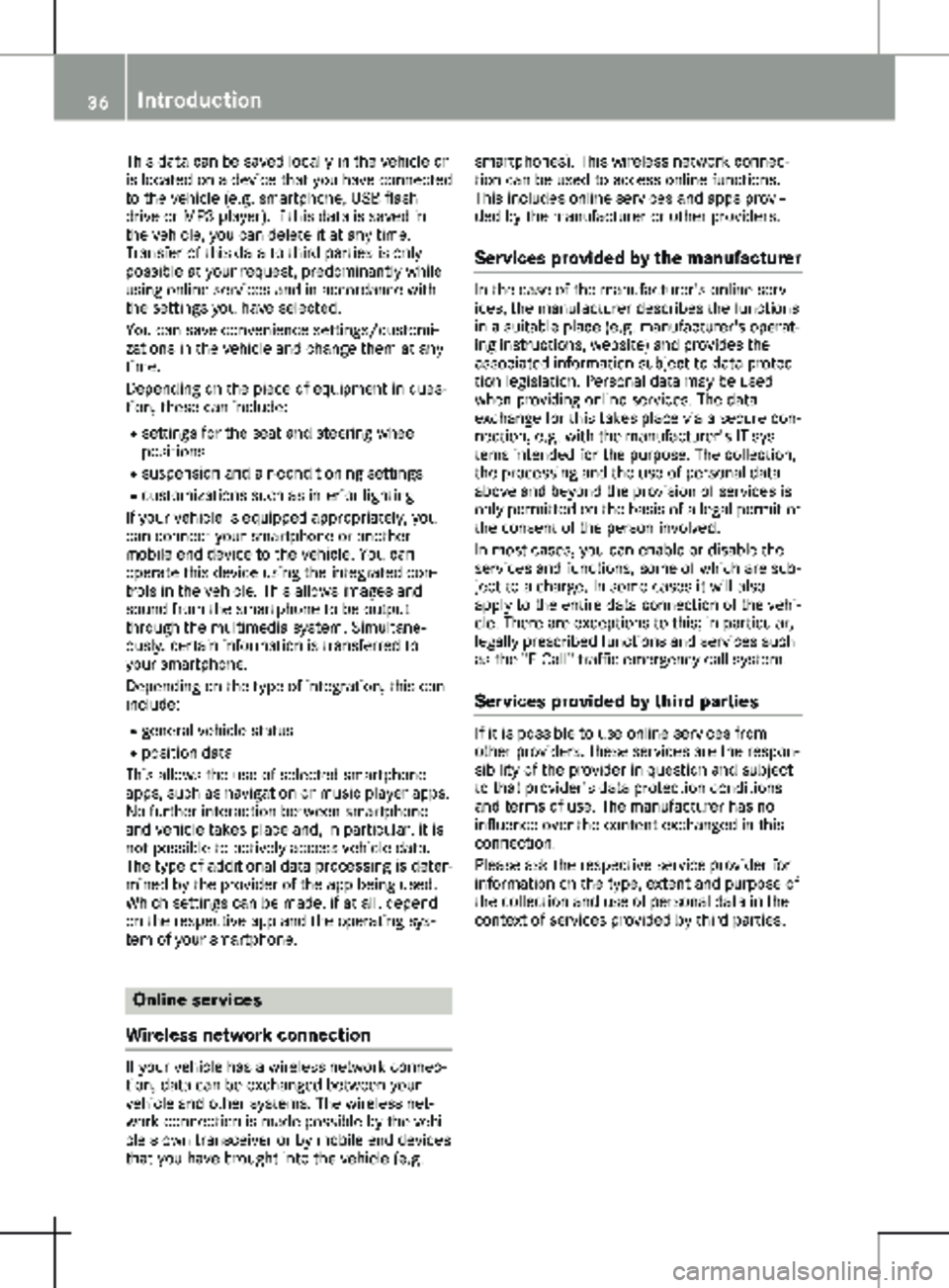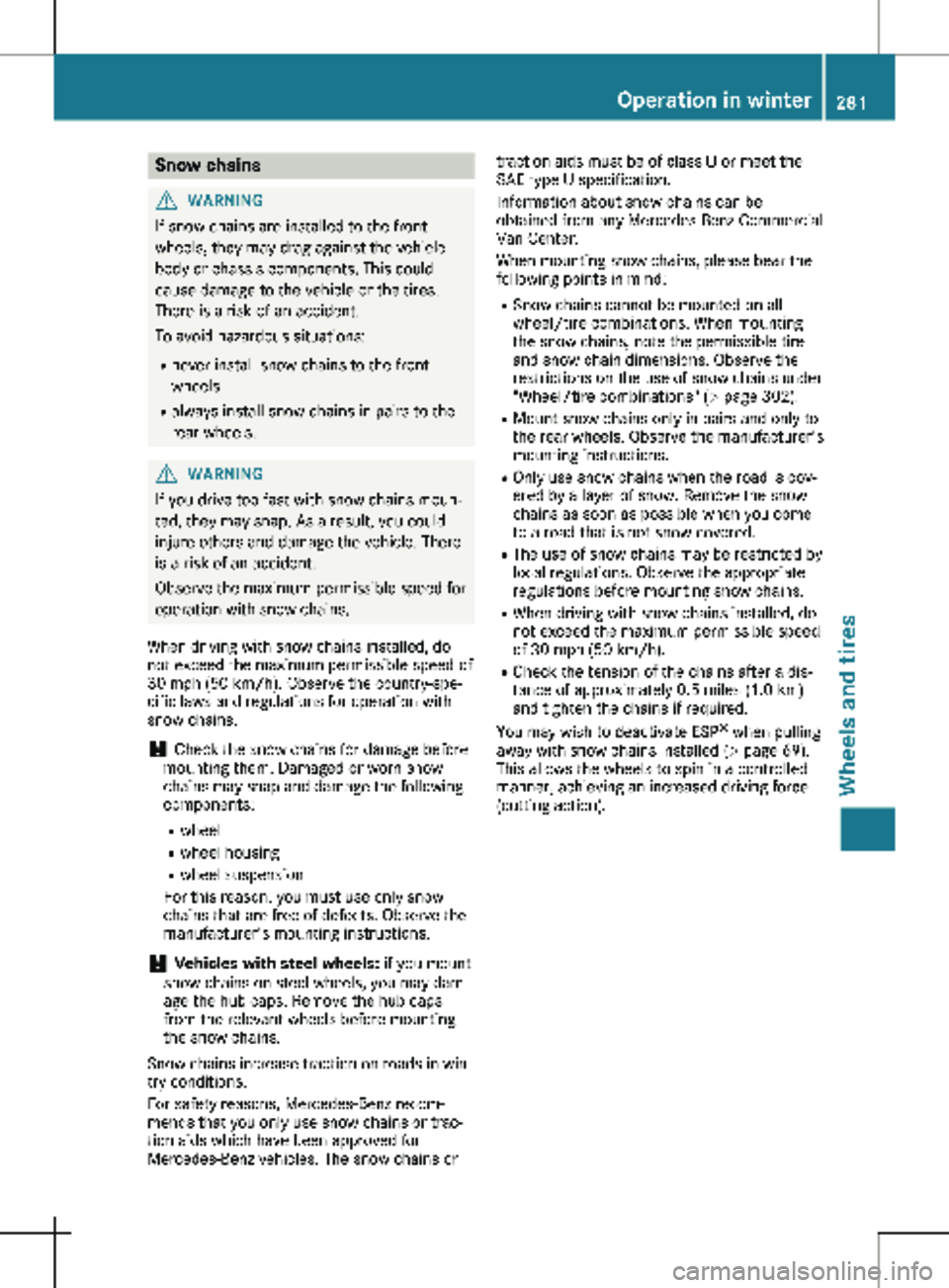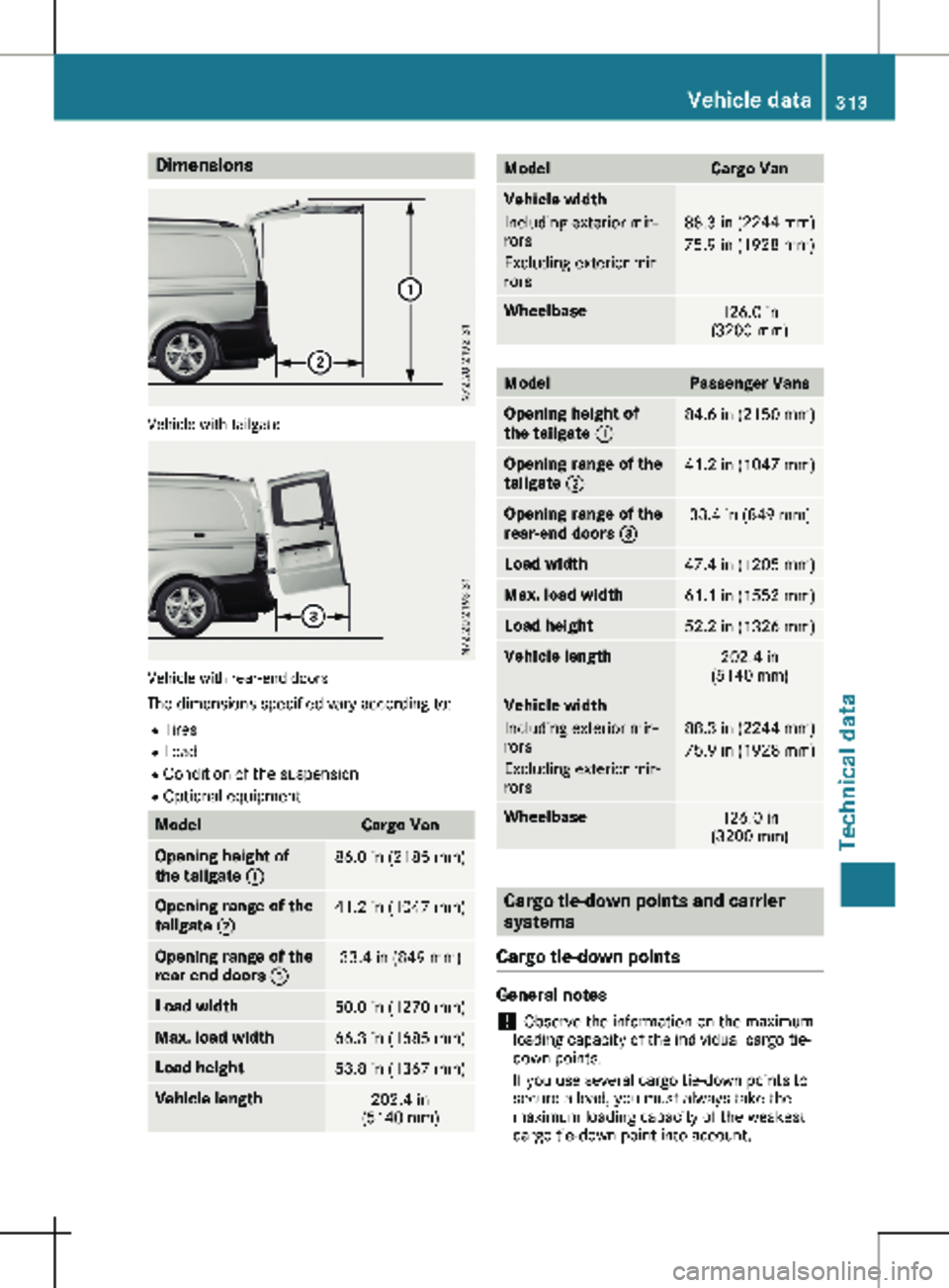suspension MERCEDES-BENZ METRIS 2020 MY20 Operator’s Manual
[x] Cancel search | Manufacturer: MERCEDES-BENZ, Model Year: 2020, Model line: METRIS, Model: MERCEDES-BENZ METRIS 2020Pages: 320, PDF Size: 26.38 MB
Page 38 of 320

This data can be saved locally in the vehicle or
is located on a device that you have connected
to the vehicle (e.g. smartphone, USB flash
drive or MP3 player). If this data is saved in
the vehicle, you can delete it at any time.
Transfer of this data to third parties is only
possible at your request, predominantly while
using online services and in accordance with
the settings you have selected.
You can save convenience settings/customi-
zations in the vehicle and change them at any
time.
Depending on the piece of equipment in ques-
tion, these can include:
R settings for the seat and steering wheel
positions
R suspension and air-conditioning settings
R customizations such as interior lighting
If your vehicle is equipped appropriately, you
can connect your smartphone or another
mobile end device to the vehicle. You can
operate this device using the integrated con-
trols in the vehicle. This allows images and
sound from the smartphone to be output
through the multimedia system. Simultane-
ously, certain information is transferred to
your smartphone.
Depending on the type of integration, this can
include:
R general vehicle status
R position data
This allows the use of selected smartphone
apps, such as navigation or music player apps.
No further interaction between smartphone
and vehicle takes place and, in particular, it is
not possible to actively access vehicle data.
The type of additional data processing is deter-
mined by the provider of the app being used.
Which settings can be made, if at all, depend
on the respective app and the operating sys-
tem of your smartphone. Online services
Wireless network connection If your vehicle has a wireless network connec-
tion, data can be exchanged between your
vehicle and other systems. The wireless net-
work connection is made possible by the vehi-
cle's own transceiver or by mobile end devices
that you have brought into the vehicle (e.g. smartphones). This wireless network connec-
tion can be used to access online functions.
This includes online services and apps provi-
ded by the manufacturer or other providers.
Services provided by the manufacturer In the case of the manufacturer's online serv-
ices, the manufacturer describes the functions
in a suitable place (e.g. manufacturer's operat-
ing instructions, website) and provides the
associated information subject to data protec-
tion legislation. Personal data may be used
when providing online services. The data
exchange for this takes place via a secure con-
nection, e.g. with the manufacturer's IT sys-
tems intended for the purpose. The collection,
the processing and the use of personal data
above and beyond the provision of services is
only permitted on the basis of a legal permit or
the consent of the person involved.
In most cases, you can enable or disable the
services and functions, some of which are sub-
ject to a charge. In some cases it will also
apply to the entire data connection of the vehi-
cle. There are exceptions to this; in particular,
legally prescribed functions and services such
as the "E-Call" traffic emergency call system.
Services provided by third parties If it is possible to use online services from
other providers, these services are the respon-
sibility of the provider in question and subject
to that provider's data protection conditions
and terms of use. The manufacturer has no
influence over the content exchanged in this
connection.
Please ask the respective service provider for
information on the type, extent and purpose of
the collection and use of personal data in the
context of services provided by third parties.36
Introduction
Page 283 of 320

Snow chains
G
WARNING
If snow chains are installed to the front
wheels, they may drag against the vehicle
body or chassis components. This could
cause damage to the vehicle or the tires.
There is a risk of an accident.
To avoid hazardous situations:
R never install snow chains to the front
wheels
R always install snow chains in pairs to the
rear wheels. G
WARNING
If you drive too fast with snow chains moun-
ted, they may snap. As a result, you could
injure others and damage the vehicle. There
is a risk of an accident.
Observe the maximum permissible speed for
operation with snow chains.
When driving with snow chains installed, do
not exceed the maximum permissible speed of
30 mph (50 km/h
). Observe the country-spe-
cific laws and regulations for operation with
snow chains.
! Check the snow chains for damage before
mounting them. Damaged or worn snow
chains may snap and damage the following
components:
R wheel
R wheel housing
R wheel suspension
For this reason, you must use only snow
chains that are free of defects. Observe the
manufacturer's mounting instructions.
! Vehicles with steel wheels:
if you mount
snow chains on steel wheels, you may dam-
age the hub caps. Remove the hub caps
from the relevant wheels before mounting
the snow chains.
Snow chains increase traction on roads in win-
try conditions.
For safety reasons, Mercedes-Benz recom-
mends that you only use snow chains or trac-
tion aids which have been approved for
Mercedes-Benz vehicles. The snow chains or traction aids must be of class U or meet the
SAE type U
specification.
Information about snow chains can be
obtained from any Mercedes-Benz Commercial
Van Center.
When mounting snow chains, please bear the
following points in mind:
R Snow chains cannot be mounted on all
wheel/tire combinations. When mounting
the snow chains, note the permissible tire
and snow chain dimensions. Observe the
restrictions on the use of snow chains under
"Wheel/tire combinations" (Y page 302).
R Mount snow chains only in pairs and only to
the rear wheels. Observe the manufacturer's
mounting instructions.
R Only use snow chains when the road is cov-
ered by a layer of snow. Remove the snow
chains as soon as possible when you come
to a road that is not snow-covered.
R The use of snow chains may be restricted by
local regulations. Observe the appropriate
regulations before mounting snow chains.
R When driving with snow chains installed, do
not exceed the maximum permissible speed
of 30 mph (50 km/h).
R Check the tension of the chains after a dis-
tance of approximately 0.5 miles (1.0 km)
and tighten the chains if required.
You may wish to deactivate ESP ®
when pulling
away with snow chains installed ( Y page 69).
This allows the wheels to spin in a controlled
manner, achieving an increased driving force
(cutting action). Operation in winter
281
Wheels and tires Z
Page 303 of 320

X
Turn the jack back to its out-of-use position.
X Stow the jack and the rest of the tire-
change tool kit in the vehicle again.
X Wheel with hub cap: position the opening
for the tire valve in the hub cap over the tire
valve.
X Push the edge of the hub cap with both
hands against the wheel until it clicks into
place. Make sure the hub cap retaining
catches engage on the steel wheel.
X If included in the vehicle equipment, secure
the faulty wheel in the spare wheel bracket
(Y page
303). Otherwise, transport the
faulty wheel in the cargo compartment.
X Check the tire pressure of the newly moun-
ted wheel and adjust it if necessary.
Observe the recommended tire pressure
( Y page
282).
Vehicles with the tire pressure monitor sys-
tem: all mounted wheels must be equipped
with functioning sensors.
X Retighten the wheel bolts or wheel nuts to
the specified tightening torque after the
vehicle has been driven for
30 miles
(50 km).
When using a wheel/spare wheel with a new
or newly painted wheel rim, have the wheel
bolts/nuts retightened again after approx-
imately
600 to 3,000 miles (1,000 to
5,000 km). Observe the specified tightening
torque. Wheel and tire combinations
General notes
! Retreaded tires are neither tested nor rec-
ommended by Mercedes-Benz, since previ-
ous damage cannot always be detected on
retreaded tires. As a result, Mercedes-Benz
cannot guarantee vehicle safety if retreaded
tires are mounted. Do not mount used tires
if you have no information about their previ-
ous usage.
! For safety reasons, Mercedes-Benz recom-
mends that you only use tires, wheels and accessories which have been approved by
Mercedes-Benz specifically for your vehicle.
These tires have been specially adapted for
use with the driving safety systems, such as
ABS or ESP
®
.
Only use tires, wheels or accessories tested
and approved by Mercedes-Benz. Certain
characteristics, e.g. handling, vehicle noise
emissions or fuel consumption, may other-
wise be adversely affected. In addition,
when driving with a load, tire dimension var-
iations could cause the tires to come into
contact with the bodywork and axle compo-
nents. This could result in damage to the
tires or the vehicle.
Mercedes-Benz accepts no liability for dam-
age resulting from the use of tires, wheels
or accessories other than those tested and
approved.
Further information on wheels, tires and
approved combinations can be obtained
from a qualified specialist workshop.
! Large wheels: the lower the section width
for a certain wheel size, the lower the ride
comfort is on poor road surfaces. Roll com-
fort and suspension comfort are reduced
and the risk of damage to the wheels and
tires as a result of driving over obstacles
increases.
You will find a table with the recommended
tire pressures for various vehicle loads on the
inside of your vehicle's fuel filler flap or under
"Tire pressure tables"
(Y page 289). You can
find further information under "Tire pressure"
( Y page 282).
Check tire pressures regularly and only when
the tires are cold.
Notes on the vehicle equipment – always
equip the vehicle:
R with tires of the same size across an axle
(left/right)
R with the same type of tires on all wheels at
a given time (summer tires, winter tires)
i Not all wheel/tire combinations can be
installed at the factory in all countries. Wheel and tire combinations
301
Wheels and tires Z
Page 315 of 320

Dimensions
Vehicle with tailgate
Vehicle with rear-end doors
The dimensions specified vary according to:
R Tires
R Load
R Condition of the suspension
R Optional equipment Model Cargo Van
Opening height of
the tailgate :
86.0 in (2185 mm)
Opening range of the
tailgate ;
41.2 in (1047 mm)
Opening range of the
rear-end doors
= 33.4 in (849 mm)
Load width
50.0 in (1270 mm)
Max. load width
66.3 in (1685 mm)
Load height
53.8 in (1367 mm)
Vehicle length
202.4 in
(5140 mm ) Model Cargo Van
Vehicle width
Including exterior mir-
rors
Excluding exterior mir-
rors
88.3 in
(2244 mm)
75.9 in (1928 mm) Wheelbase
126.0 in
(3200 mm
) Model Passenger Vans
Opening height of
the tailgate :
84.6 in (2150 mm)
Opening range of the
tailgate ;
41.2 in (1047 mm)
Opening range of the
rear-end doors
= 33.4 in (849 mm)
Load width
47.4 in (1205 mm)
Max. load width
61.1 in (1552 mm)
Load height
52.2 in (1326 mm)
Vehicle length
202.4 in
(5140 mm
) Vehicle width
Including exterior mir-
rors
Excluding exterior mir-
rors
88.3 in
(2244 mm)
75.9 in (1928 mm) Wheelbase
126.0 in
(3200 mm
) Cargo tie-down points and carrier
systems
Cargo tie-down points General notes
! Observe the information on the maximum
loading capacity of the individual cargo tie-
down points.
If you use several cargo tie-down points to
secure a load, you must always take the
maximum loading capacity of the weakest
cargo tie-down point into account. Vehicle data
313
Technical data Z